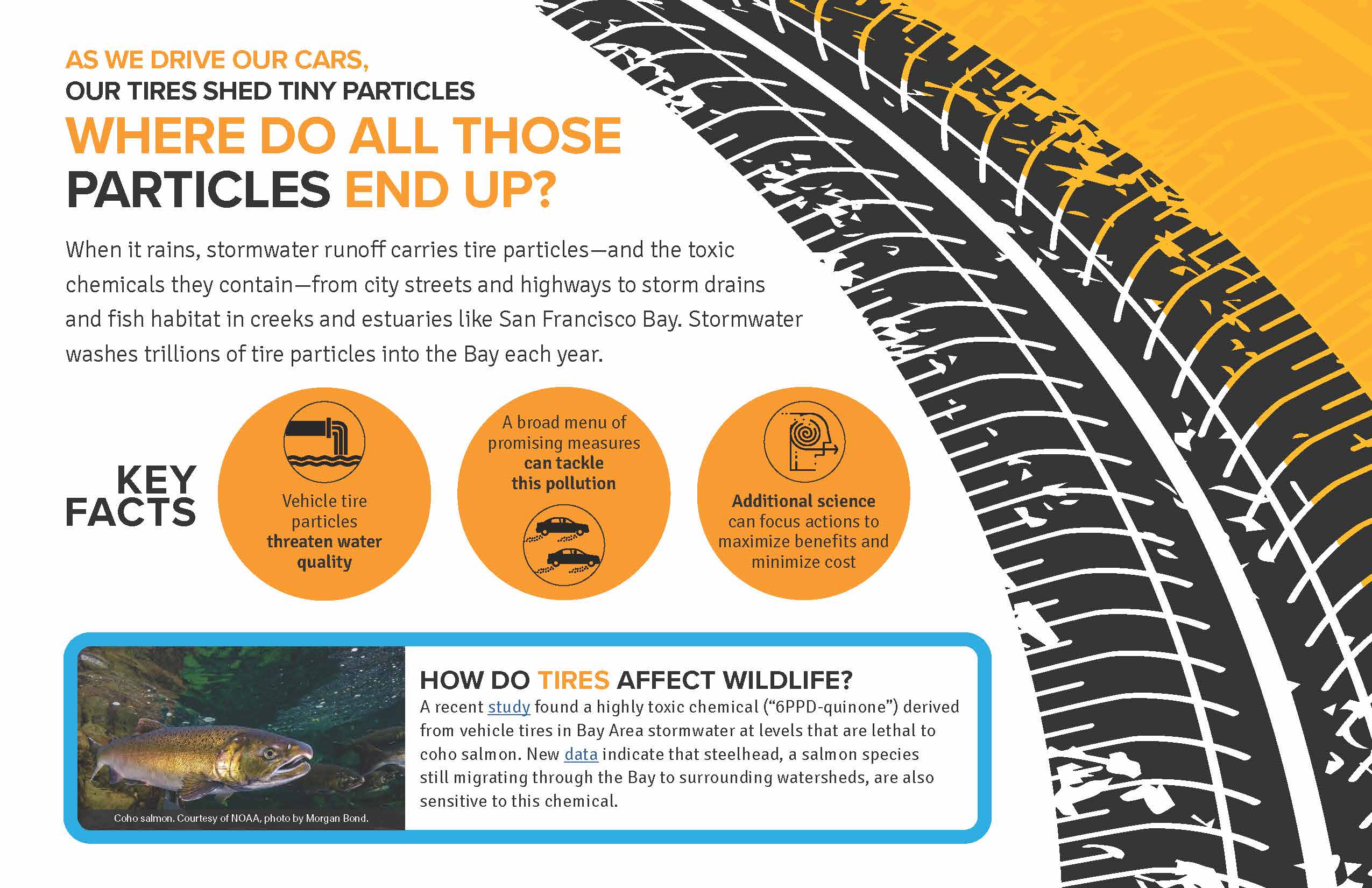Moran, K.; Askevold, R. 2022.
Microplastics from Tire Particles in San Francisco Bay Factsheet. SFEI Contribution No. 1074. San Francisco Estuary Institute: Richmond, CA.
 As we drive our cars, our tires shed tiny particles
As we drive our cars, our tires shed tiny particles
When it rains, stormwater runoff carries tire particles—and the toxic chemicals they contain—from city streets and highways to storm drains and fish habitat in creeks and estuaries like San Francisco Bay. Stormwater washes trillions of tire particles into the Bay each year.
How do tires affect wildlife?
A recent study found a highly toxic chemical (“6PPD-quinone”) derived from vehicle tires in Bay Area stormwater at levels that are lethal to coho salmon. New data indicate that steelhead, a salmon species still migrating through the Bay to surrounding watersheds, are also sensitive to this chemical.